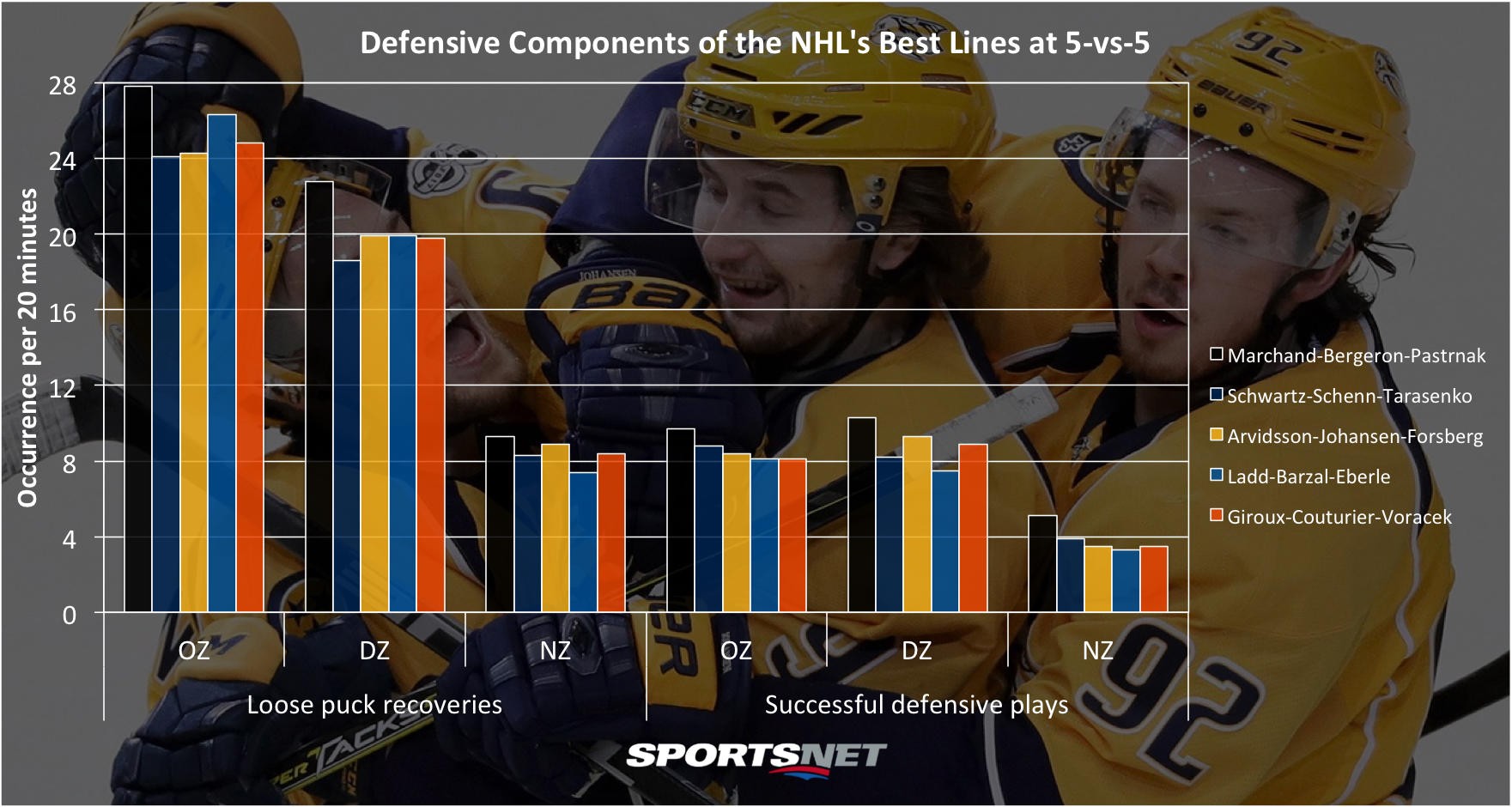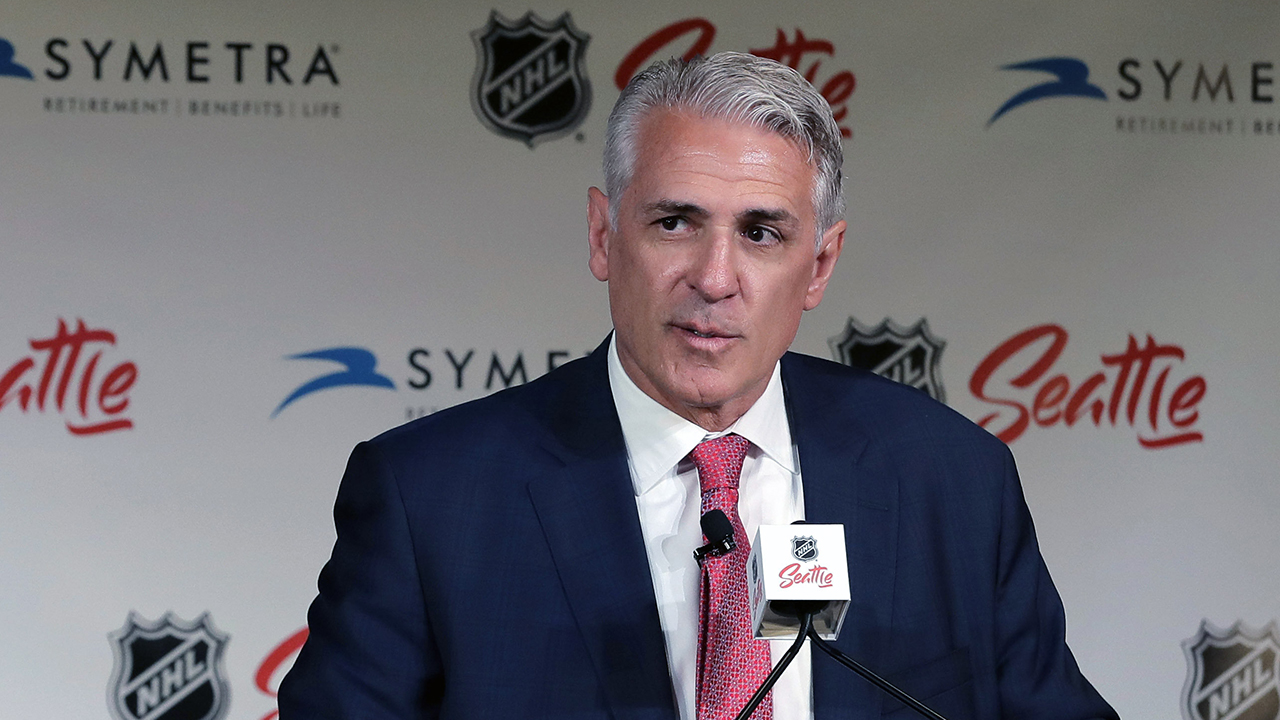Earlier this season at about the quarter mark, we looked into who were the top-five forward lines at five-on-five around the league. Since we’re about halfway through the NHL’s schedule, now is a good time to look at Corsica.Hockey’s line combo statistics again and pick out the best lines.
As before, we’ll pick out the best lines with performance-based team statistics in Corsi, on-ice goals for percentage, and expected goals based on Corsica’s model, and the lines we look at will need to have played at least 200 minutes together at 5-on-5 to qualify, and not play sheltered minutes. After we identify the lines, we’ll get into the finer details.
Based on those parameters, here’s what I came up with as the top 5-vs-5 lines of the first half of the 2017-18 NHL season.

The most surprising omission for most will be Tampa Bay’s incredible top line, but while their numbers are very good, they’re quite a bit behind many other lines in expected goals and Corsi. They separate themselves the most on the power play, which isn’t counted here.
Honourable mentions to other lines that just barely missed the top-five are the ‘Between Two Finns’ line of Jordan Staal centering Sebastian Aho and Teuvo Teravainen, the Golden Knights’ best line of Jonathan Marchessault, William Karlsson, and Reilly Smith, and the Predators’ second line of Kyle Turris between Kevin Fiala and Craig Smith.
Of the five lines that did make it, three are returnees from the first quarter: Nashville’s JOFA line of Ryan Johansen centering Filip Forsberg and Viktor Arvidsson won’t be together for the third quarter of the season as Forsberg was just injured, but they’ve remained excellent through the first half. St. Louis’ top line of Jaden Schwartz, Brayden Schenn, and Vladimir Tarasenko has continued to eat teams alive, though Schwartz also is out with an injury. And finally Philadelphia’s top line with Claude Giroux and Jakub Voracek on Sean Couturier’s wings has continued to be great while the Flyers as a whole are a little mediocre.
New on the list are the finally healthy and together Bruins trio of Patrice Bergeron, Brad Marchand, and David Pastrnak. That line has been among the most dominant the NHL has seen in the past five years, so it’s no surprise they’re here. Also new is the second line or 1A line in Long Island, with rookie Mathew Barzal centering newcomer Jordan Eberle and last season’s big free agent signing Andrew Ladd.
Now that we know who we’re looking at, let’s see how these lines create their offence.

Just like last time, the Predators’ line is lagging a bit behind the others offensively, as their 3.45 goals per 60 minutes is the second-lowest on this list. But they stand out more on defence.
Weirdly, the Bruins’ line has scored the least of this group, despite having arguably the best underlying offensive numbers overall when looking at their scoring chances and slot passes. But they do lag behind in attacking off the rush, which might cut their potential offence down a touch.
In my opinion, the Blues’ line is the most dangerous overall. The high danger chances based on shot location are a little low compared to the rest of the group, but they produce the most scoring chances on net and are top-two in each kind of dangerous pass, making their shots extra deadly. They can successfully come at you multiple ways.
The Flyers’ top line is pretty similar, but favours the back-door play with East-West passes to create their offence and moving in very close to the net to get their shots off, which has led to Couturier scoring three more goals in 39 games than he’s ever scored in a full NHL season.
The Islanders line doesn’t stand out much from the group in any one offensive category, but these are the top-five lines, so that’s not a bad thing.
Of course offence isn’t everything, so let’s look at the defensive components of the best lines in the NHL.

Breaking things down by zone you can see which lines put on better forechecking pressure, which creates offence but is ultimately a defensive play since you’re attempting to remove the puck from opponents. The Bruins’ top line blows the whole league out of the water there, which could be a reason why their shot generation numbers are off the charts, but their goal totals aren’t quite as flashy. Shots generated off the forecheck are typically not as dangerous as those off the rush, but there is a risk that comes with attacking off the rush and getting caught, and that trade-off has worked for the Bruins so far.
The Bruins line is also easily the NHL’s best in the defensive zone, as they remove possession and recover the puck at higher rates than any other line.
Nashville’s top line aren’t the best forecheckers, but they clean up almost as well as the Bruins do in the defensive zone, and they’re among the best neutral zone defenders in the league.
The Islanders’ line doesn’t put on as much pressure in the offensive zone as some other top units, but they recover pucks at a high rate due to smart positioning and good speed.
The Flyers’ line has been better defensively in the second quarter of the season than they were in the first quarter and started to stand out in the defensive zone with active positioning to change possession and push the play up ice.
The Blues’ line has also improved relative to the group from the first quarter, essentially by staying consistent. They’re not great forecheckers as they remove possession the second-most, but recover the fewest pucks, but they’ve been better in the neutral zone. Their defensive zone play, though, remains a work in progress.
One thing to watch as the season goes on is how the Bruins and Blues lines deal with some regression to the mean, as both trios boast PDOs above 107, meaning there’s been a fair amount of good fortune for them. The Bruins haven’t been particularly lucky offensively, but they’ve barely seen a goal go in against them. They are the best defensive line in the league, but no one is quite that good.
The Blues, meanwhile, have been pretty lucky both ways, being rewarded with high shooting percentages, while not seeing much blowback from their relatively mediocre defensive play.
[relatedlinks]








